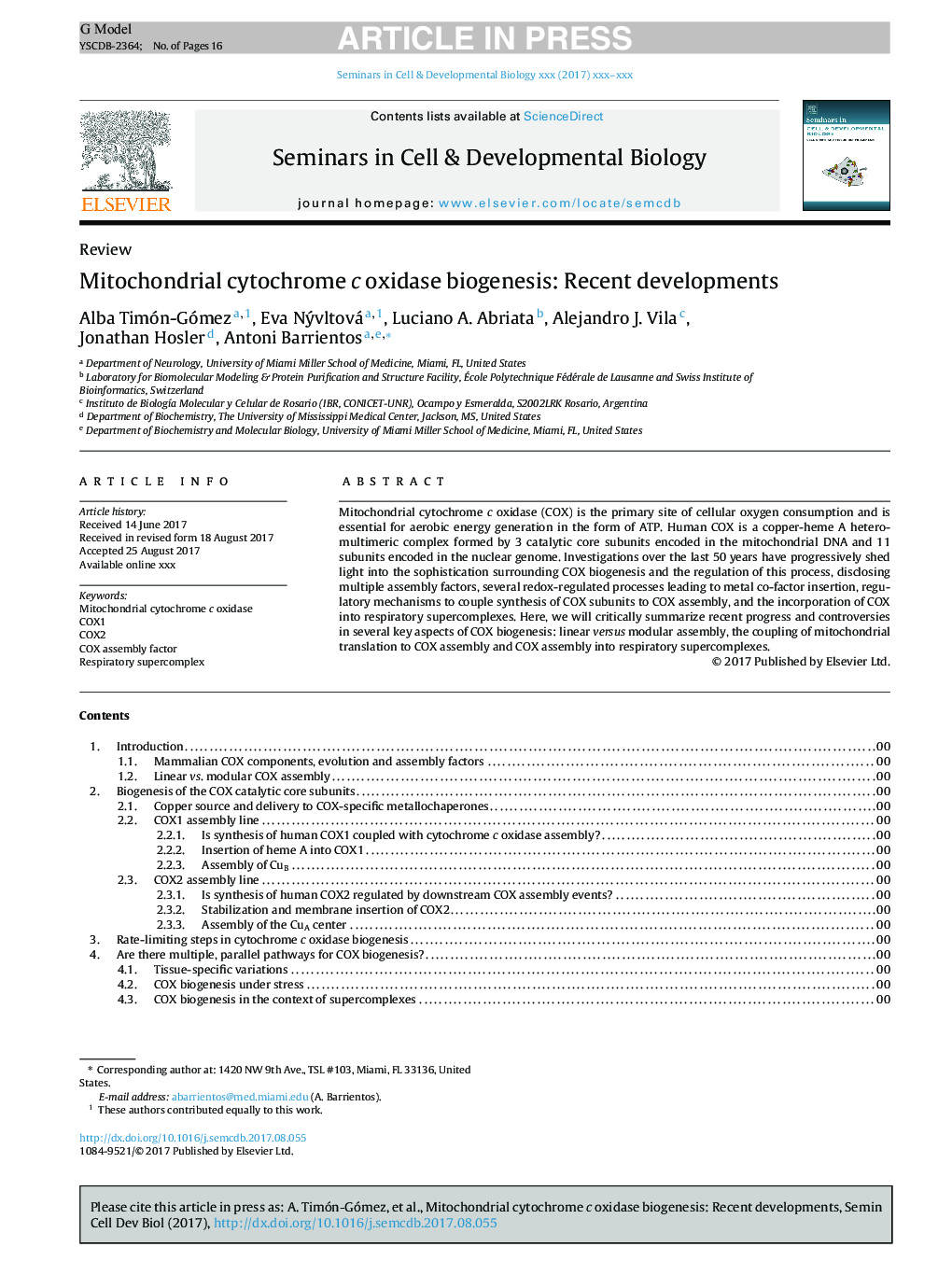| Article ID | Journal | Published Year | Pages | File Type |
|---|---|---|---|---|
| 8479720 | Seminars in Cell & Developmental Biology | 2018 | 16 Pages |
Abstract
Mitochondrial cytochrome c oxidase (COX) is the primary site of cellular oxygen consumption and is essential for aerobic energy generation in the form of ATP. Human COX is a copper-heme A hetero-multimeric complex formed by 3 catalytic core subunits encoded in the mitochondrial DNA and 11 subunits encoded in the nuclear genome. Investigations over the last 50 years have progressively shed light into the sophistication surrounding COX biogenesis and the regulation of this process, disclosing multiple assembly factors, several redox-regulated processes leading to metal co-factor insertion, regulatory mechanisms to couple synthesis of COX subunits to COX assembly, and the incorporation of COX into respiratory supercomplexes. Here, we will critically summarize recent progress and controversies in several key aspects of COX biogenesis: linear versus modular assembly, the coupling of mitochondrial translation to COX assembly and COX assembly into respiratory supercomplexes.
Keywords
Related Topics
Life Sciences
Biochemistry, Genetics and Molecular Biology
Cell Biology
Authors
Alba Timón-Gómez, Eva Nývltová, Luciano A. Abriata, Alejandro J. Vila, Jonathan Hosler, Antoni Barrientos,
